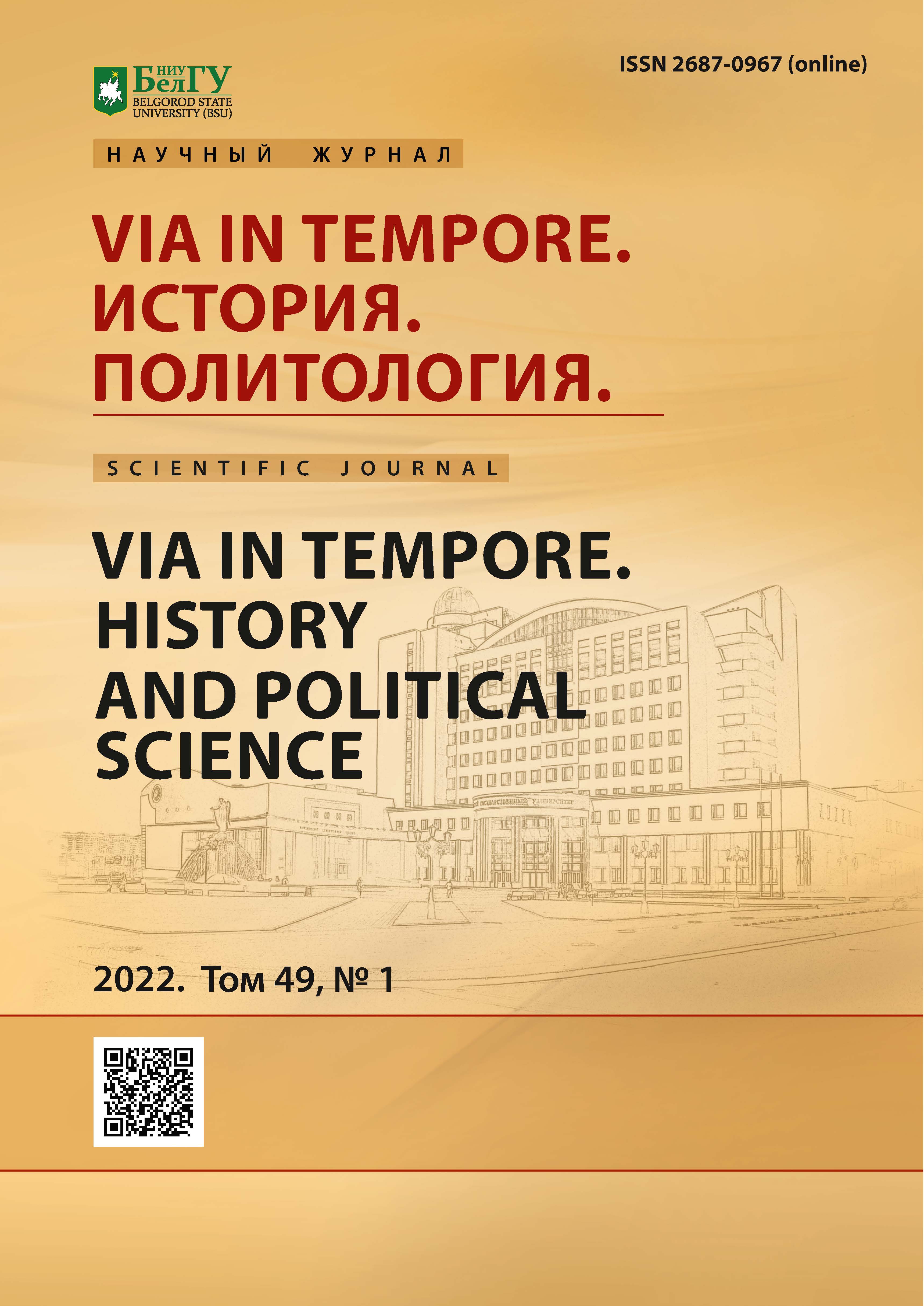The formation and evolution of the symbolism of the European Order attire and its influence on the development of elite noble national culture
DOI:
https://doi.org/10.52575/2687-0967-2022-49-1-97-111Keywords:
order, cavaliers, cultural history, nobility, noble culture, Renaissance, Middle Ages, Modern times, France, knightly order, attire, insigniaAbstract
The status of order cavalier meant both inclusion in a wide range of privileged nobility, and, first of all, a new round in the development of the system of ideas about the role of the nobility in state policy at its various levels. The external and internal features of the status of the cavalier were filled with completely different symbolic and semantic connections with previous historical periods, its legal status and their cultural and political significance. Accordingly, the symbolic and semantic features of the development of order insignia (in particular, order attire) developed in different ways throughout the entire process of their evolution and interacted to varying degrees with certain aspects of political and elite culture. This article discusses the process of becoming, the symbolic meaning and evolution of the order attire and its gradual loss as an order insignia and its significance as a cultural phenomenon by the Russian history and by the elite noble culture of 18-19th century.
Acknowledgements: The work is carried out with the support of the State Museum-Reserve «Tsaritsyno» and thanks to the invaluable help of an art critic, candidate of art history, associate professor of the Moscow State Institute of Cinematography and collector M.M. Trenikhin, researcher at the Tsaritsyno State Museum-Reserve.
Downloads
References
Амелехина С.А. 2003. Культурно-историческая эволюция формы и символики церемониальных костюмов при Российском императорском дворе XVIII – ХIХ вв.: автореф. дис. … к. и. н. М., РГГУ, 34 с.
Бантыш-Каменский Д.Н. 1814. Историческое собрание списков кавалерам четырех российских императорских орденов. М., В типографии Н.С. Всеволожскаго, 336 c.
Беловинский Л.В. 2007. Иллюстрированный энциклопедический историко-бытовой словарь русского народа. XVIII – начало XIX в. М., Эксмо, 784 с.
Данилов А.Ю., 2002. Российская фалеристика: учебное пособие. Ярославль, Яросл. гос. ун-т., 123 с.
Демурже А. 2008. Pie postulatio voluntatis (Пасхалий II). Рыцари Христа. Военно-монашеские ордены в средние века, XI–XVI вв. М., Евразия, 542 с.
Замысловский Е.Е. 1892. Исторический очерк российских орденов и сборник основных орденских статутов. СПб.
Иванчиков А.И. 1794. Кавалерский свиток, в коем показаны все Ордена в Европе, причины и время их учреждения, знаки и торжественные одежды. СПб., Тип. А.И. Богдановича, 37 с.
Кареев Н.И. 1894. Золотого Руна орден. Энциклопедический словарь Брокгауза и Ефрона, СПб., Типо-литография И.А. Ефрона, XIIa: 631.
Кареев Н.И. 1901. Талар. Энциклопедический словарь Брокгауза и Ефрона. СПб., Типография Акц. Общ. «Издательское дело», XXXIIa: 533.
Кирсанова Р.М. 1989. Глазет. Розовая ксандрейка и драдедамовый платок: Костюм – вещь и образ в русской литературе XIX в. М., Книга, 286 с.
Кирсанова Р.М. 1995. Епанча. Костюм в русской художественной культуре XVIII – первой половины XX вв.: Опыт энциклопедии. М., Большая Российская энциклопедия, 383 с.
Кулабухов В.С. 2008. Кастовость дворянства в системе пореформенной эволюции. Информационный гуманитарный портал «Знание. Понимание. Умение». 6: http://www.zpu-journal.ru/e-zpu/2008/6/Kulabukhov/
Левин С. 2008. Поставщики Капитула Российского кавалерского ордена. Антиквариат, предметы искусства и коллекционирования, 63: 122.
Орешкина М.А. 2015. Проекция рыцарских Орденов на современность. Научный журнал КубГАУ, 111: 1–12.
Постникова-Лосева М.М. 1983. Золотое и серебряное дело XV–XX вв. М., Наука. 375 с.
Прокопьев С.М., Фахрутдинова Д. 2016. Барон Б.В. Кёне и его геральдические реформы. Вестник МГУП, 2: 47–51.
Пчелов Е.В. 2005. Барон Б.В. Кёне: штрихи к портрету. Российский государственный герб: композиция, стилистика и семантика в историческом аспекте. (Библиотека Русской Антропологической Школы, выпуск 1). М., РГГУ: 80–86.
Рондо К. 1889. Письмо лорду Гамильтону. Дипломатическая переписка английских послов и посланников при русском дворе (Москва, 6-го декабря 1731 г.). Сборник Российского исторического общества. СПб., Типография Императорской Академии Наук, 66: 401–403.
Свод законов Российской империи. Том I. Книга Пятая. Учреждение Капитула Российских Императорских и Царских Орденов. СПб., 1832: 525–574.
Справочная книга о лицах С.-Петербургского купечества и других званий… (с 1 ноября 1889 по 1 февраля 1890). СПб., 1890, 817 с.
Шепелев Л.Е. 1991. Титулы, мундиры, ордена в Российской империи. Л., Наука, 222 с.: 40–49.
Gérard Lagleder 1983 The Rule Of The Order Of St. John. Blessed Gérard and his «Everlasting Brotherhood»: The Order of St. John. Eos-Verlag, St. Ottilien.
Larousse P., Auge C. 1898. Nouveau Larousse illustré: dictionnaire universel encyclopédique. Paris, 5: 26–28.
Perlbach M. 1890. Die Statuten des Deutschen Ordens Nach den Ältesten handschriften. Halle: 52.
Pottier B., Joseph M. Piel. 1953. Miscelânea de etimología portuguesa e galega. Primiera Série: 432–433.
Wattel M., Wattel B. 2009. Les Grand'Croix de la Légion d'honneur de 1805 à nos jours. Titulaires français et étrangers. Paris, Archives & Culture, 700 p.
Abstract views: 254
Share
Published
How to Cite
Issue
Section
Copyright (c) 2022 Via in tempore. History and political science

This work is licensed under a Creative Commons Attribution 4.0 International License.


